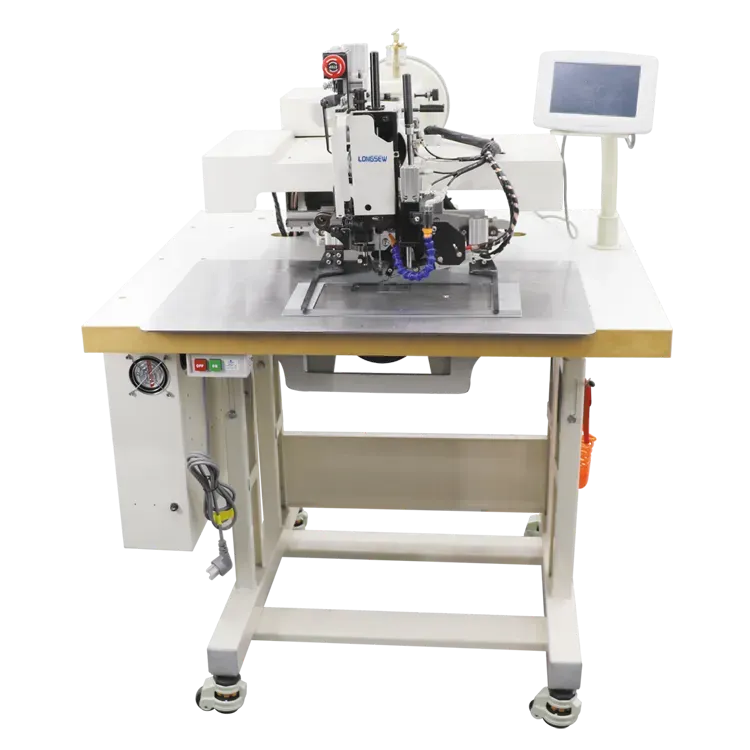chain stitch sewing
The Art of Chain Stitch Sewing
Chain stitch sewing is a timeless technique that has captured the imagination of textile artists and crafters around the world. This method of stitching, characterized by a series of interlocking loops, not only creates a decorative element but also provides robust seams in fabric construction. Whether you're a seasoned seamstress or a curious novice, understanding the intricacies of chain stitch sewing can elevate your sewing projects and enhance your creative expression.
Historical Background
The origins of chain stitch can be traced back to ancient civilizations, where its simplicity and effectiveness in joining fabrics made it a popular choice among artisans. In fact, various cultures have utilized this stitch for centuries, developing unique styles and applications. In the 19th century, with the advent of the sewing machine, chain stitch became even more accessible to the masses. Manufacturers introduced machines capable of producing chain stitches at a rapid pace, making it a staple in the garment industry.
The Technique
The chain stitch is unique because it is formed using a single thread that loops through the fabric, creating a chain-like pattern. To accomplish this, you need a needle, thread, and the fabric you wish to sew. Here's a simple guide to getting started with chain stitch
1. Prepare Your Materials Choose a fabric that is suitable for chain stitching. Cotton or linen works well, as they are easy to manage and hold stitches effectively. Select a needle appropriate for your fabric type, and thread it with a comfortable length of thread.
2. Starting the Stitch Begin by bringing the needle up through the fabric at the starting point. Unlike a straight stitch, you’ll be creating a loop with your next move.
chain stitch sewing

3. Creating the Chain With the needle still threaded, take it down through the fabric a short distance away, and pull it back up again in line with the first hole, creating a loop. As you pull the thread, allow the needle to create the chain by following the path of the previous stitch.
4. Continuing the Pattern Repeat this process, ensuring that each stitch interlocks properly with the previous one. This creates a series of connected loops that are visually appealing as well as functional.
5. Finishing the Stitch To secure the end, insert the needle through the last loop before pulling the thread tight. This locks the chain in place and prevents it from unraveling.
Applications
Chain stitch sewing is incredibly versatile. In fashion, it’s commonly used to create decorative borders on garments, adding a touch of elegance to otherwise simple pieces. It’s also employed in quilting, embroidery, and even leatherwork. The durability of chain stitches makes them ideal for utility items, such as bags and outdoor gear, where robust stitching is essential.
Additionally, artists have begun to explore the artistic potential of chain stitch in contemporary textile art. The ability to manipulate colors and create intricate designs has made this technique a favorite among modern craftspeople. Chain stitch embroidery can transform mundane fabrics into stunning works of art, or serve as a narrative element in storytelling through textiles.
Conclusion
Chain stitch sewing is more than just a technique; it's an art form that connects us to the past while allowing for creative exploration in the present. Whether used for practical applications or artistic endeavors, chain stitch remains a beloved choice among crafters. As you delve into this enchanting world of interlocking loops, remember that practice is key. With each stitch, you not only enhance your skills but also contribute to a rich tradition that spans centuries. So, gather your materials, thread your needle, and start creating; the potential of chain stitch sewing is limited only by your imagination.
-
Boost Production Efficiency with a Pattern Sewing MachineNewsAug.29,2025
-
Industrial Excellence with the Best Heavy Duty Sewing MachineNewsAug.29,2025
-
Precision and Power with the Best Pattern Sewing MachineNewsAug.29,2025
-
Reliable Bulk Packaging Starts With the Right FIBC Sewing MachineNewsAug.29,2025
-
Advanced Packaging Solutions: Elevate Productivity with Jumbo Bag Sewing Machine and Industrial Stitching EquipmentNewsAug.29,2025
-
High-Performance Solutions for Bulk Packaging: FIBC Sewing Machine and MoreNewsAug.29,2025
-
Maximize Efficiency with an Industrial Cylinder Arm Sewing MachineNewsAug.28,2025


























